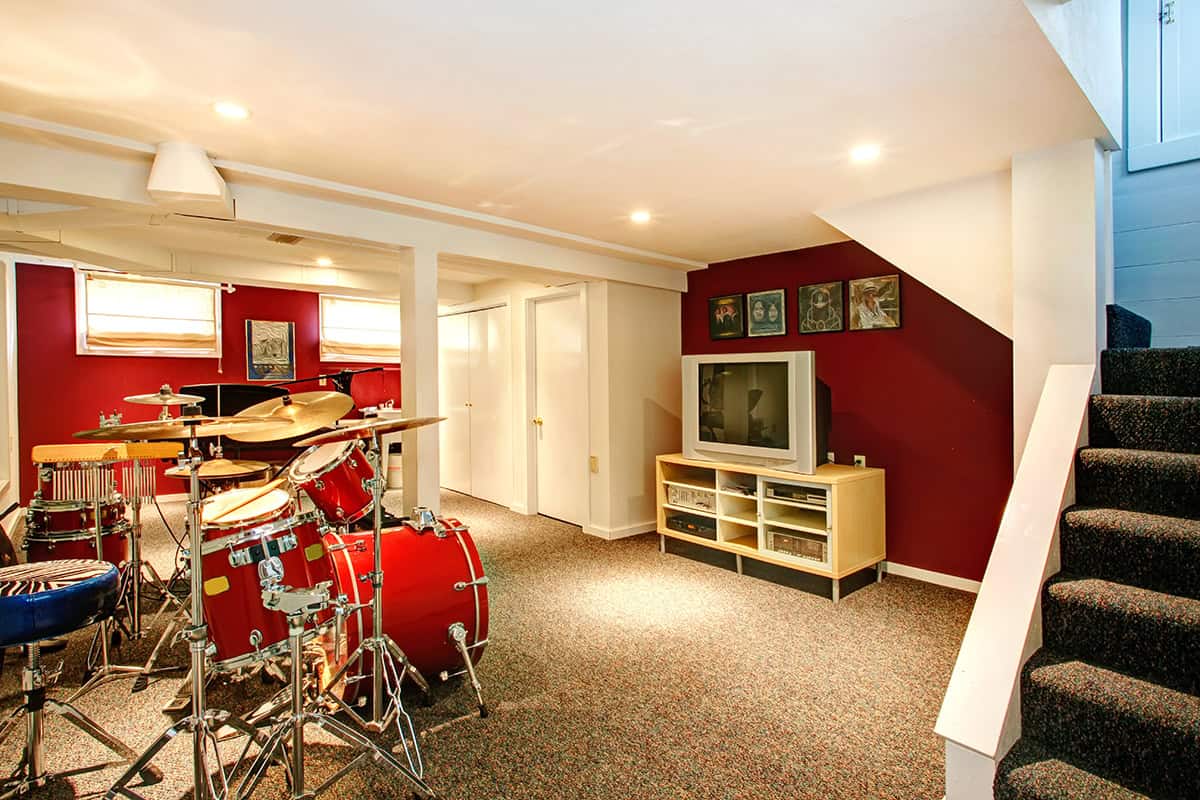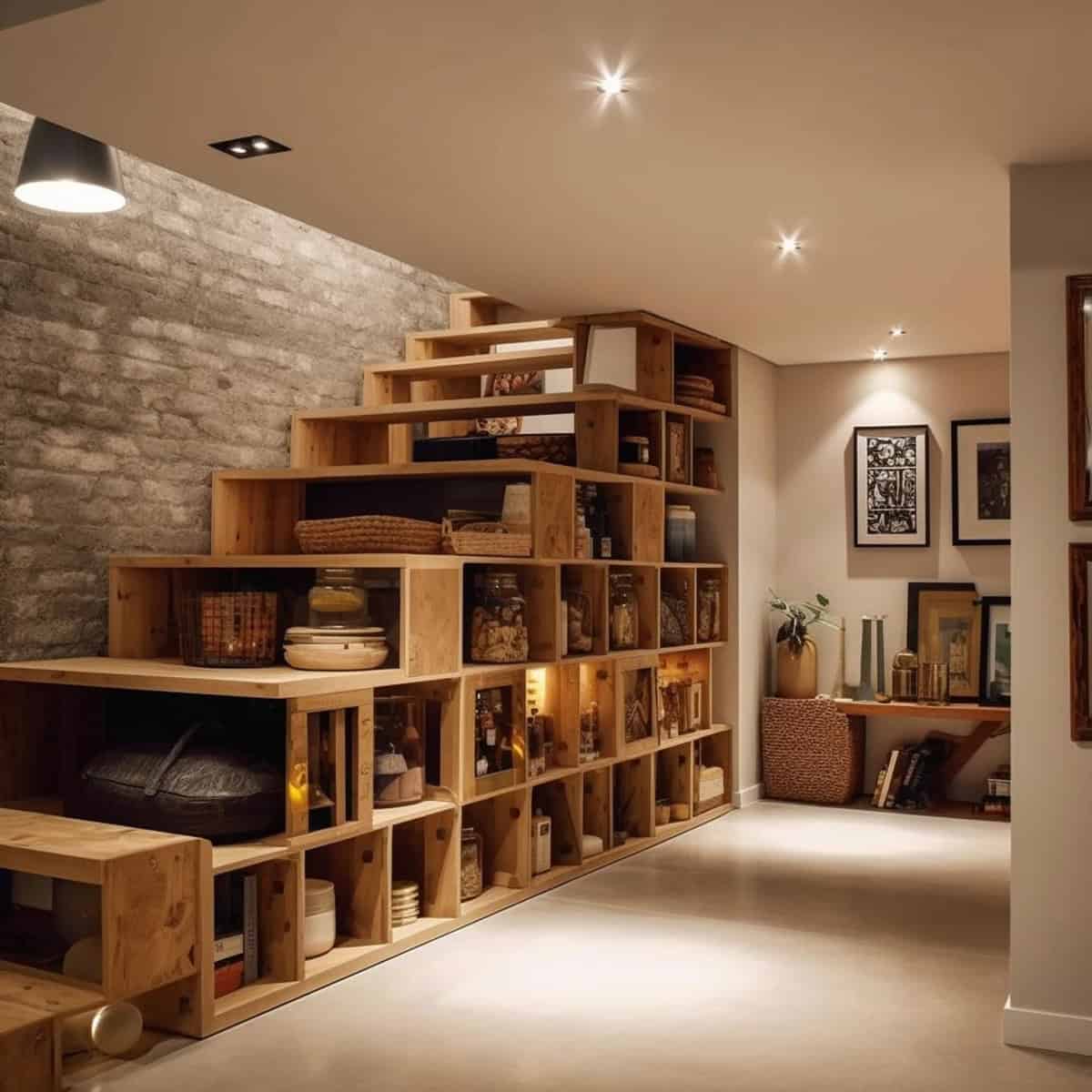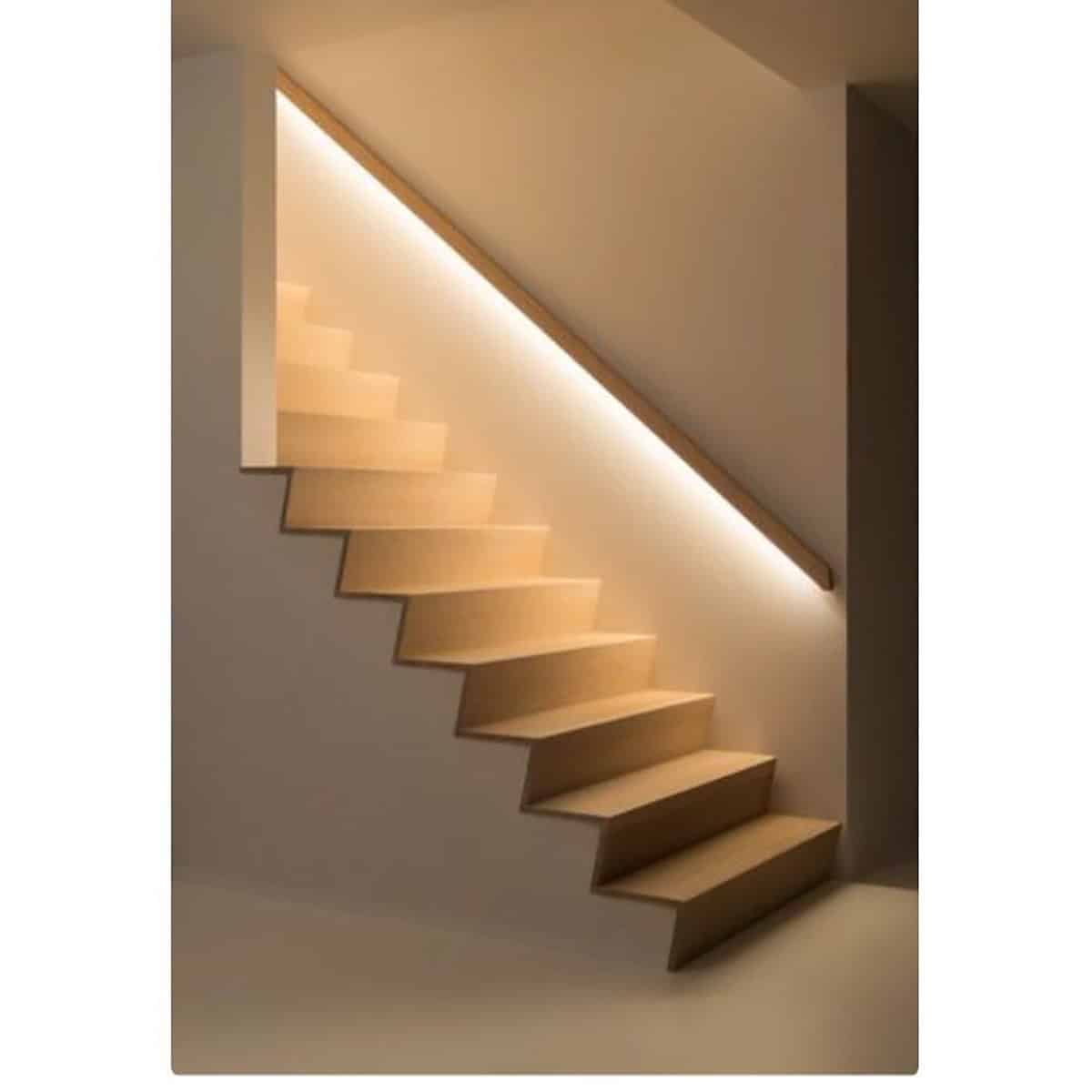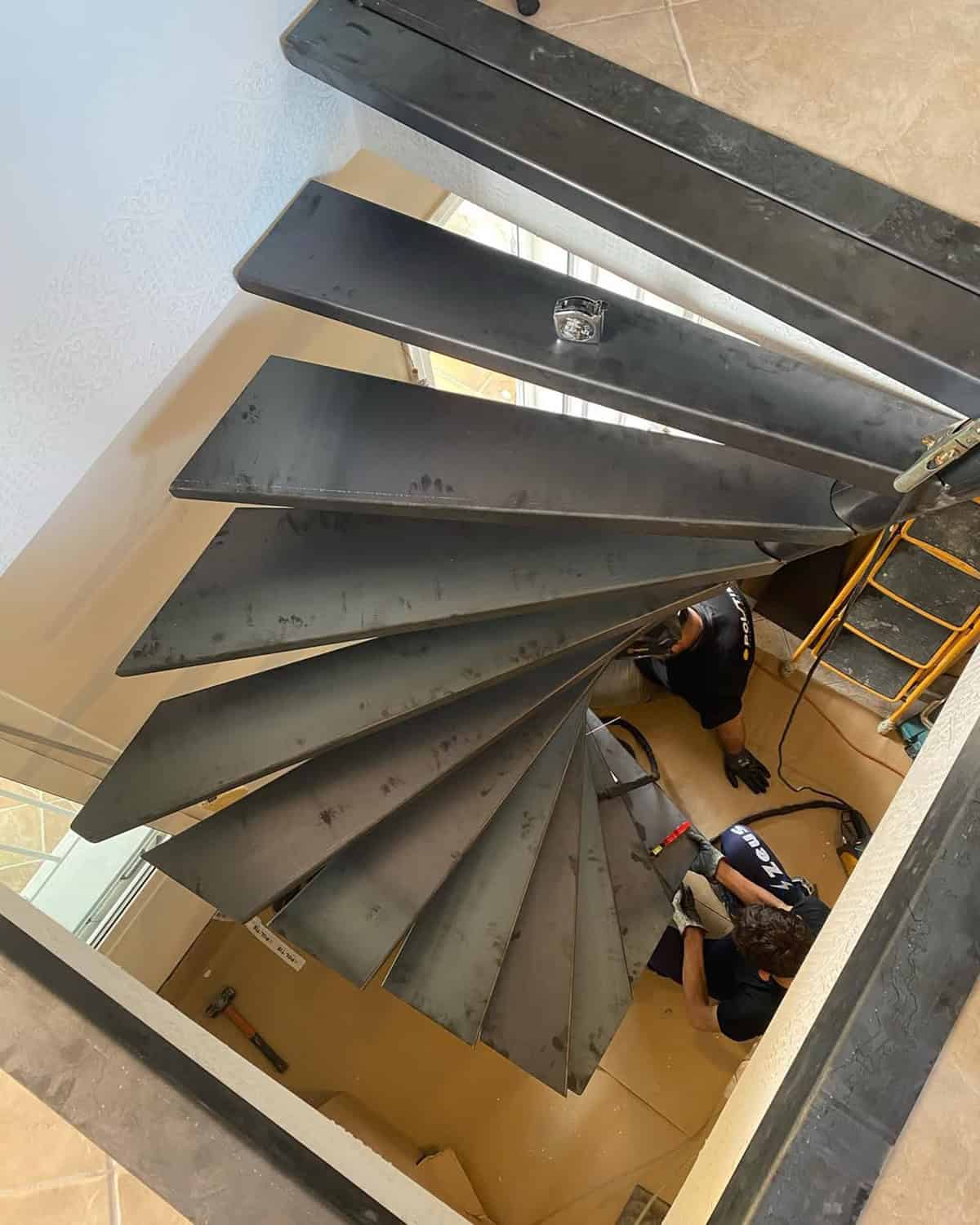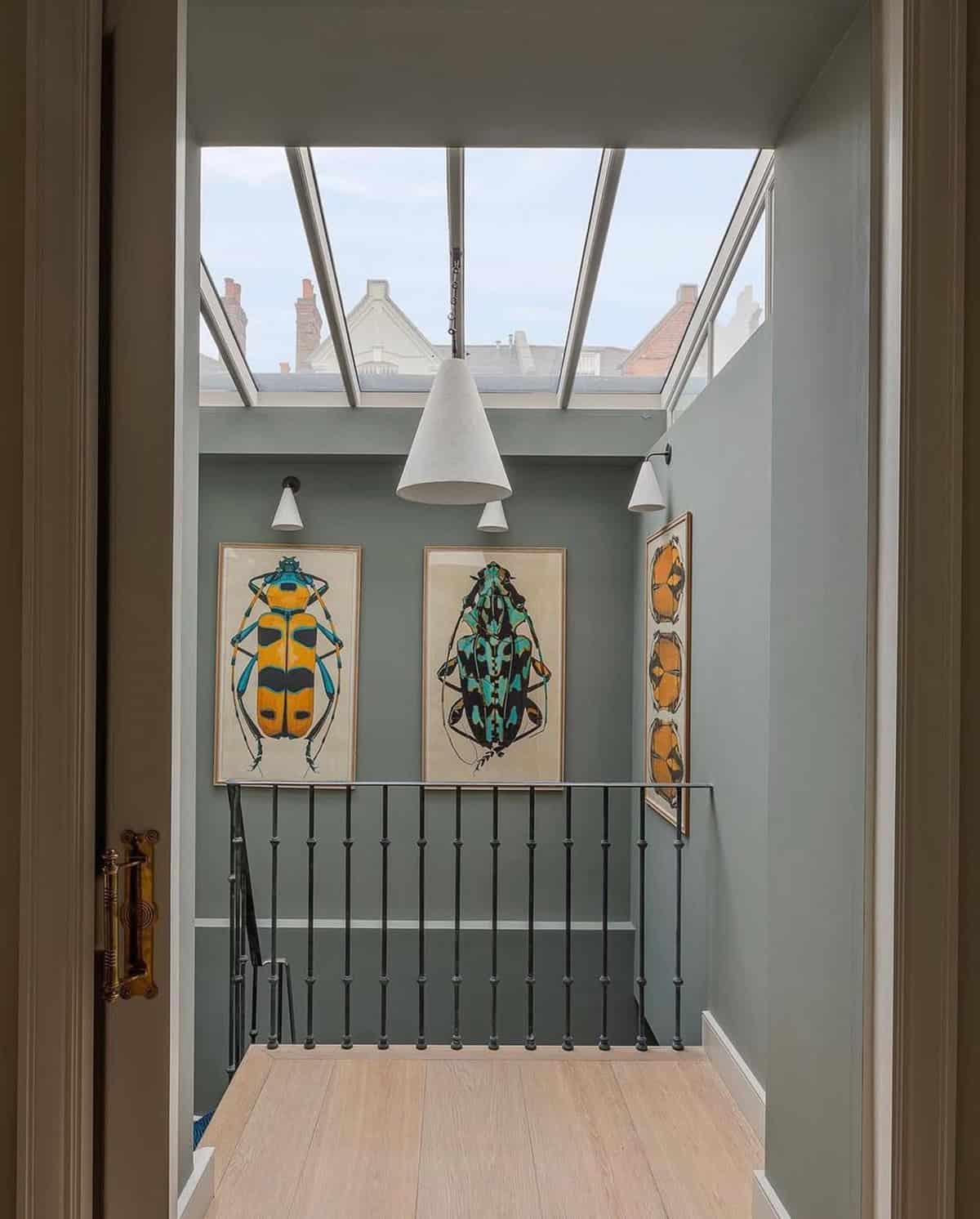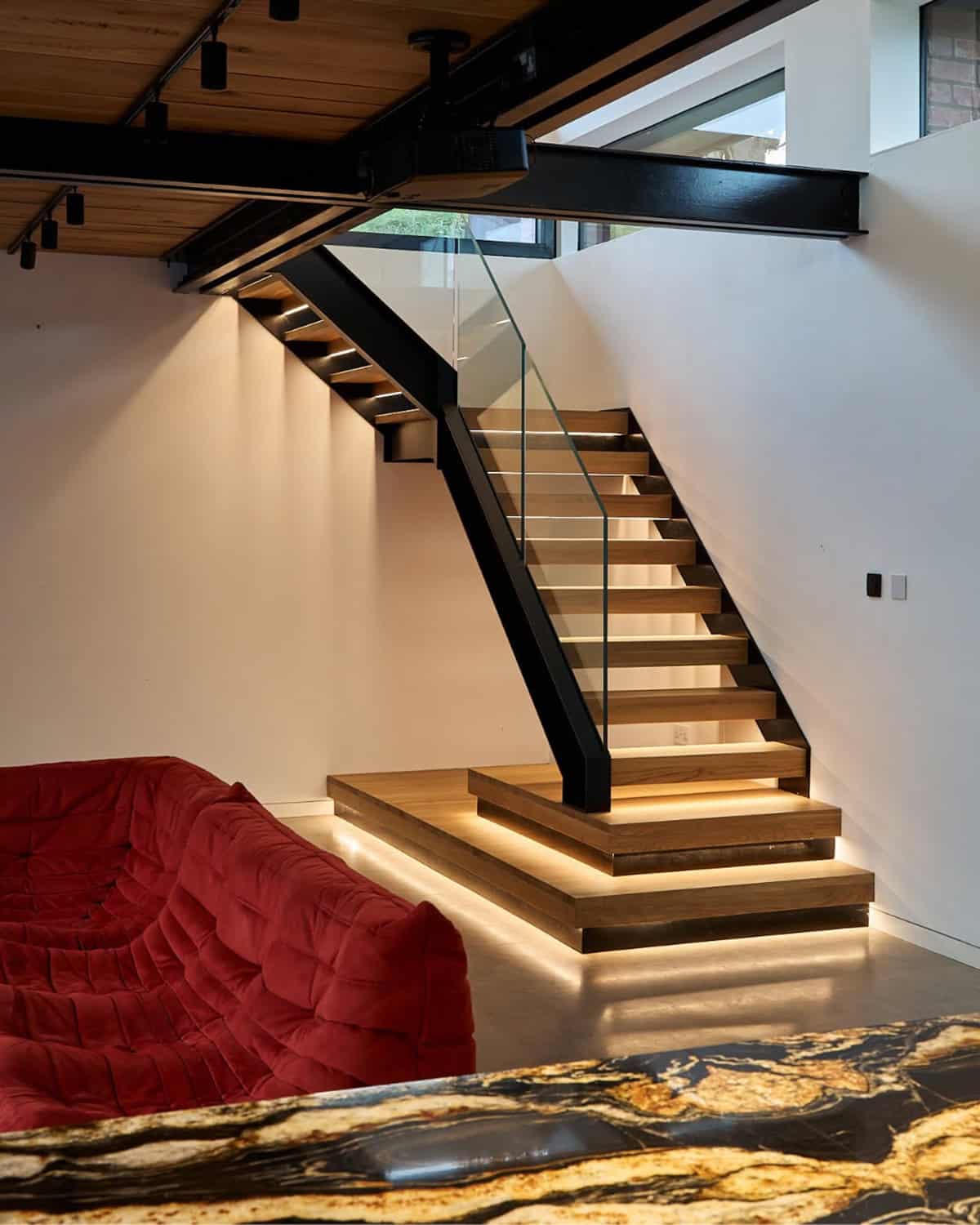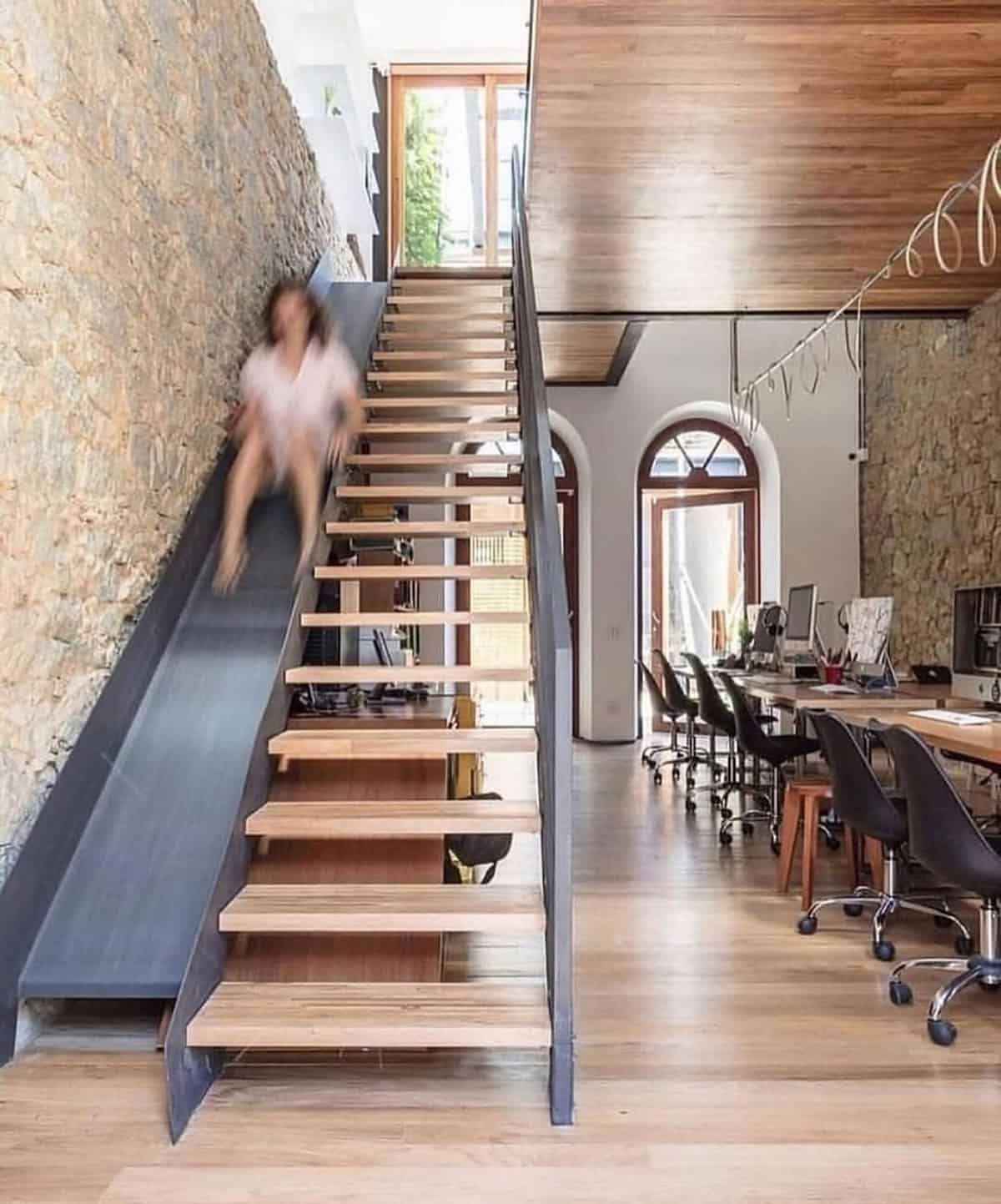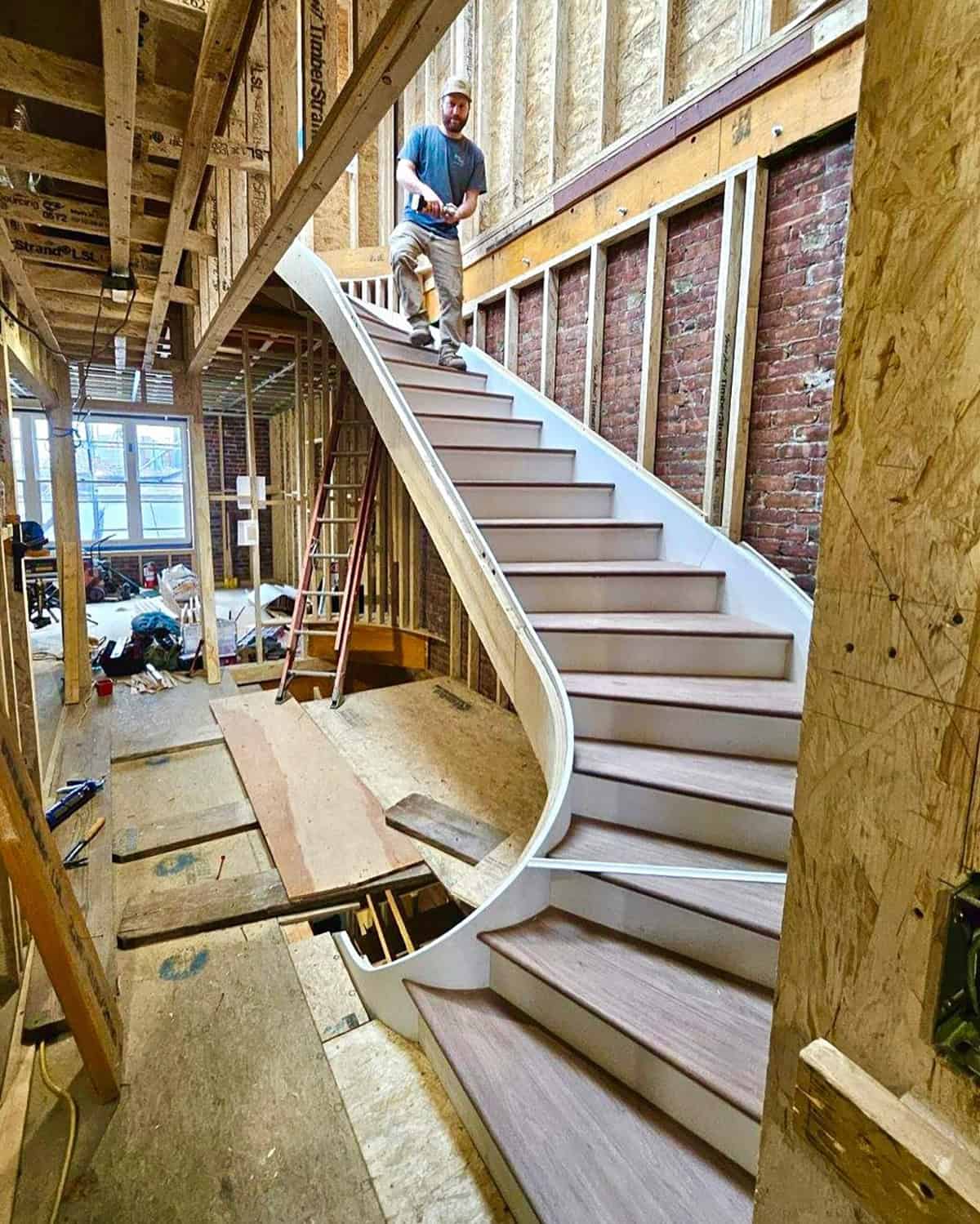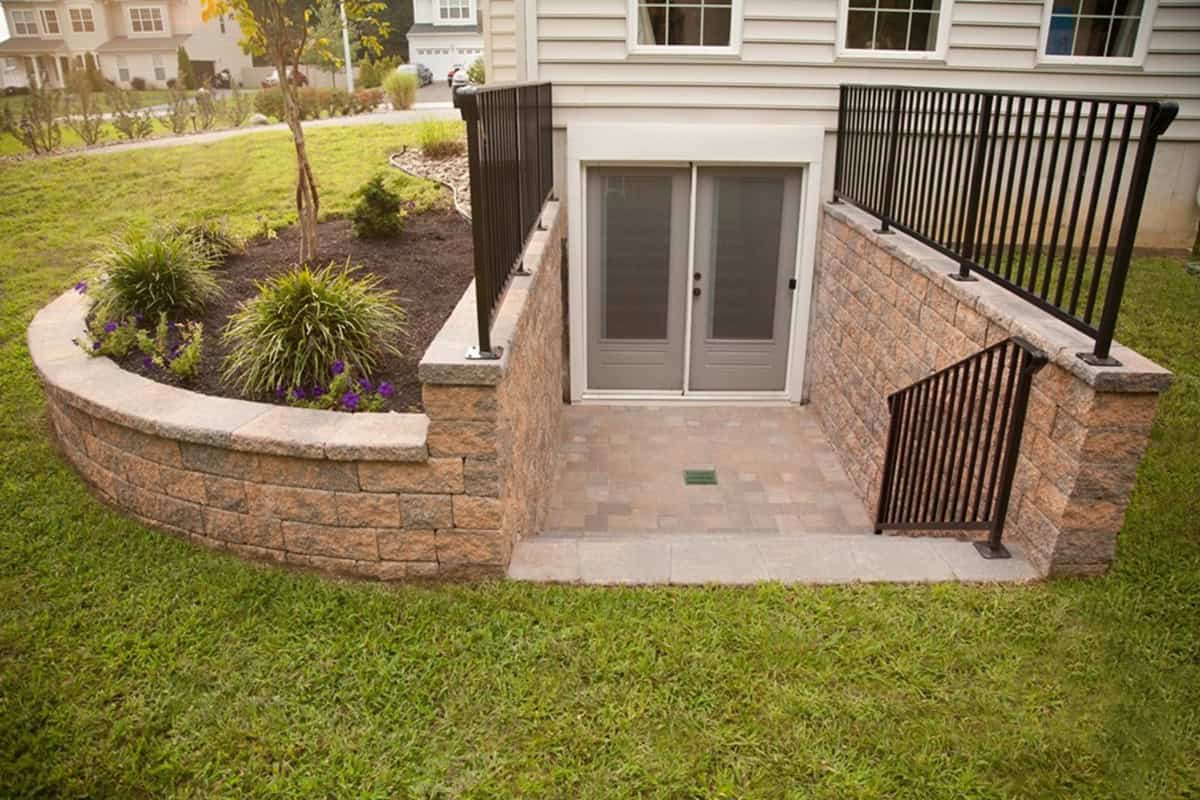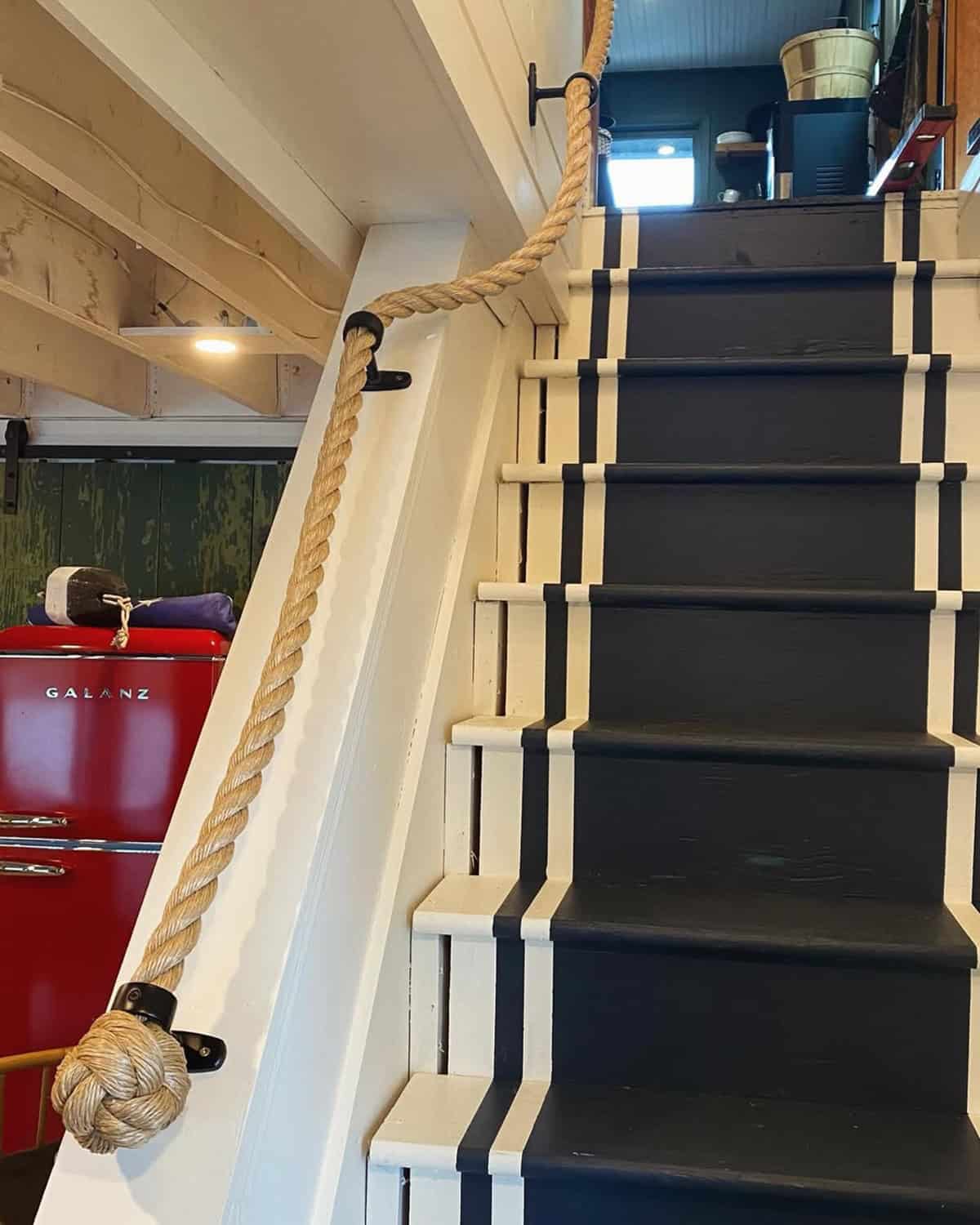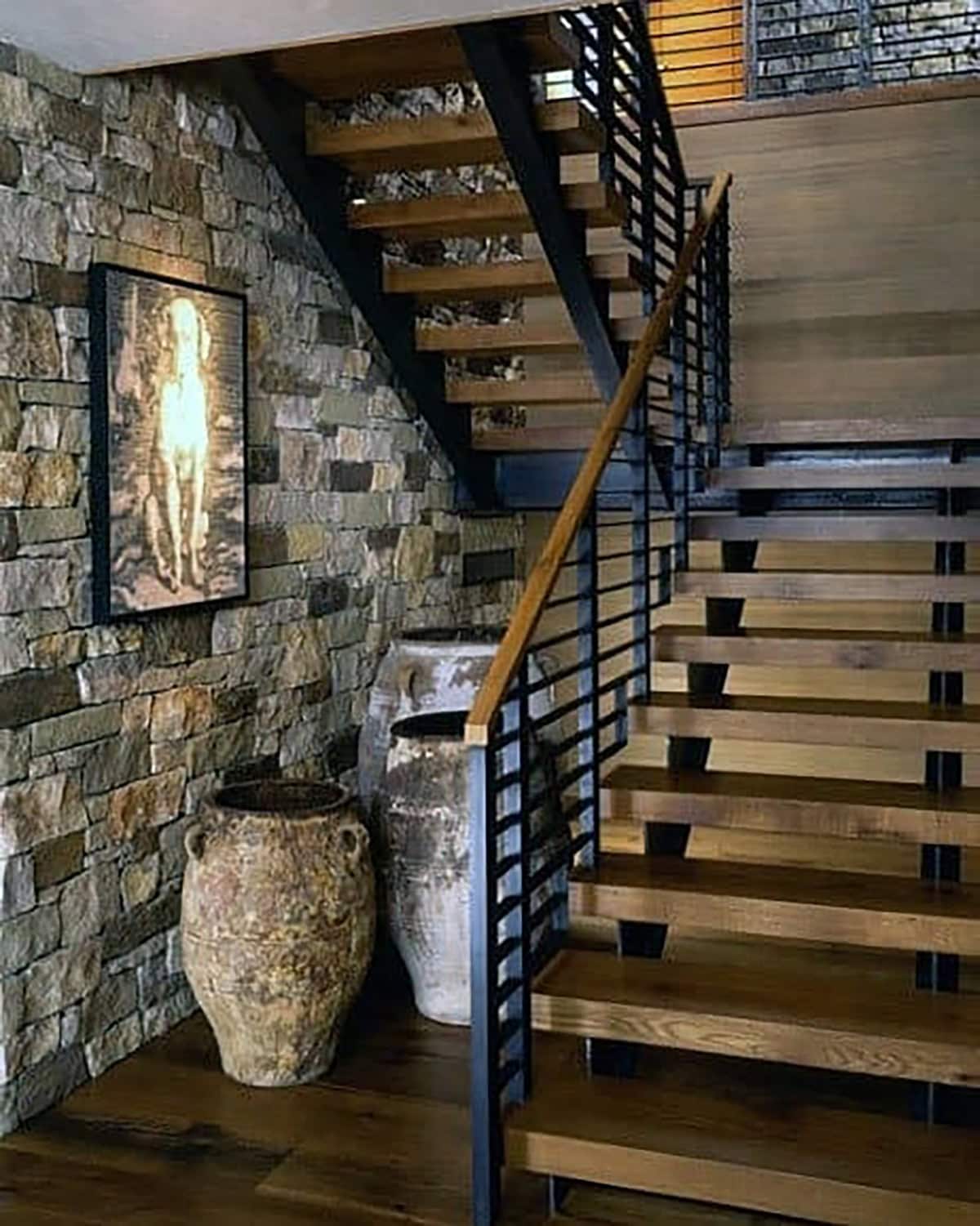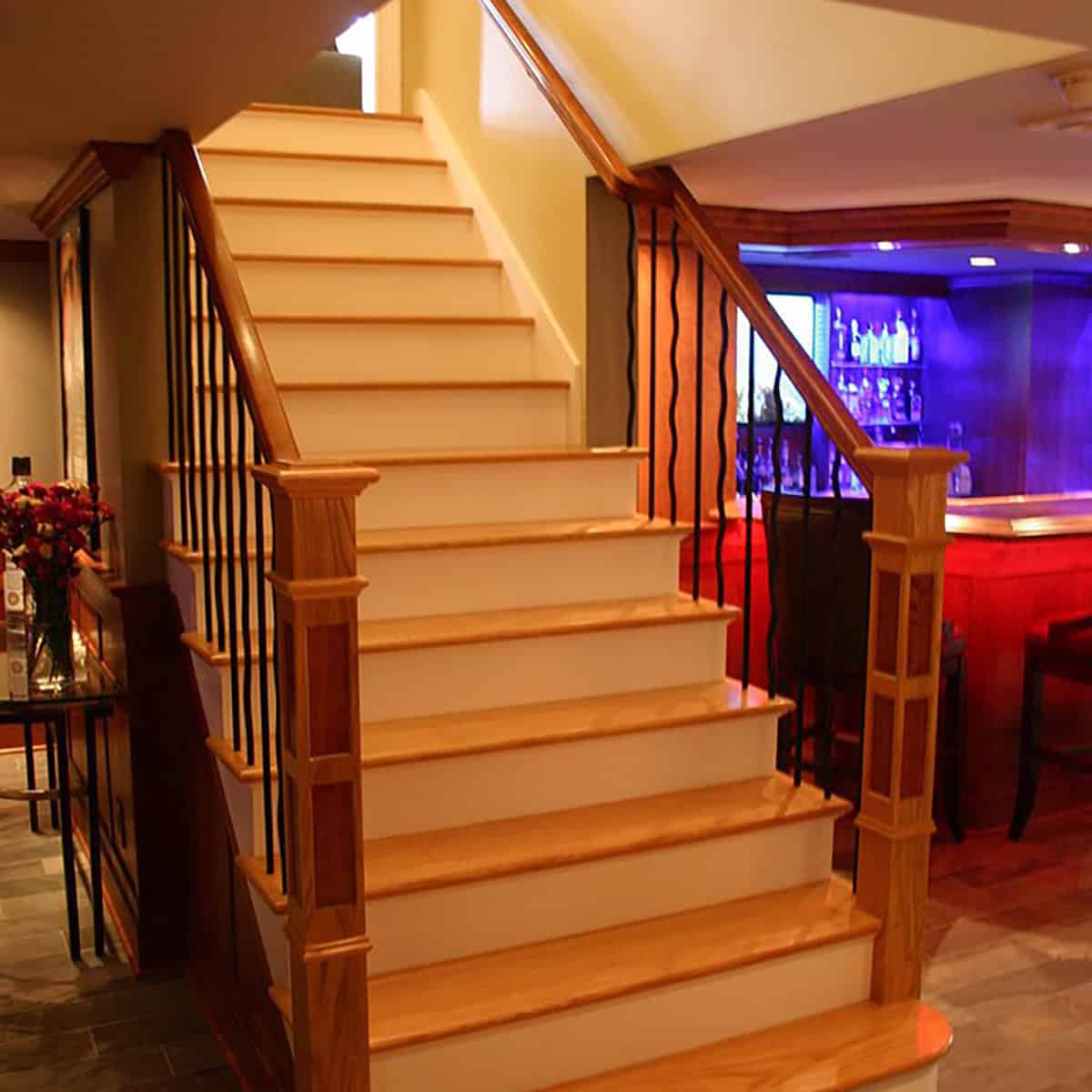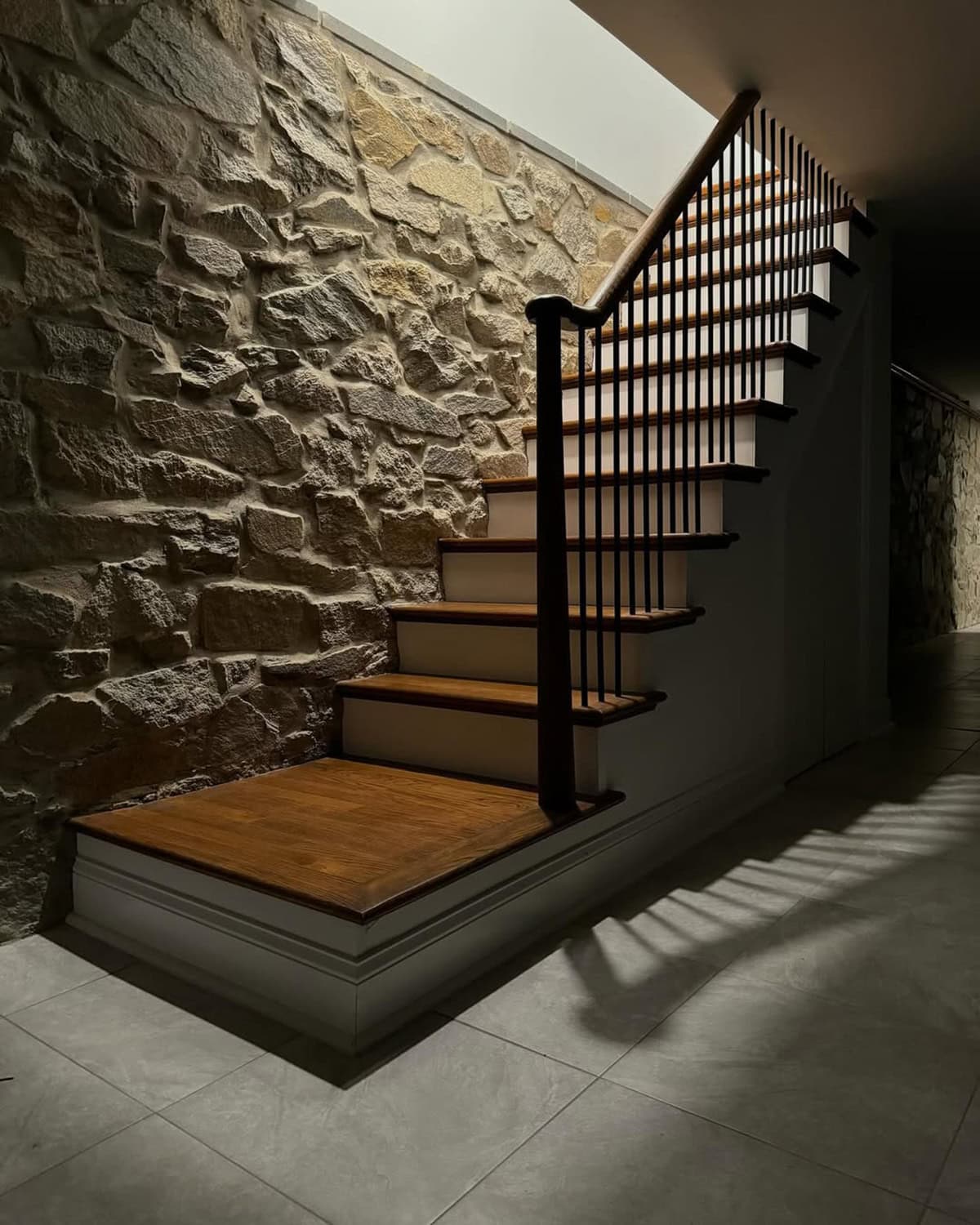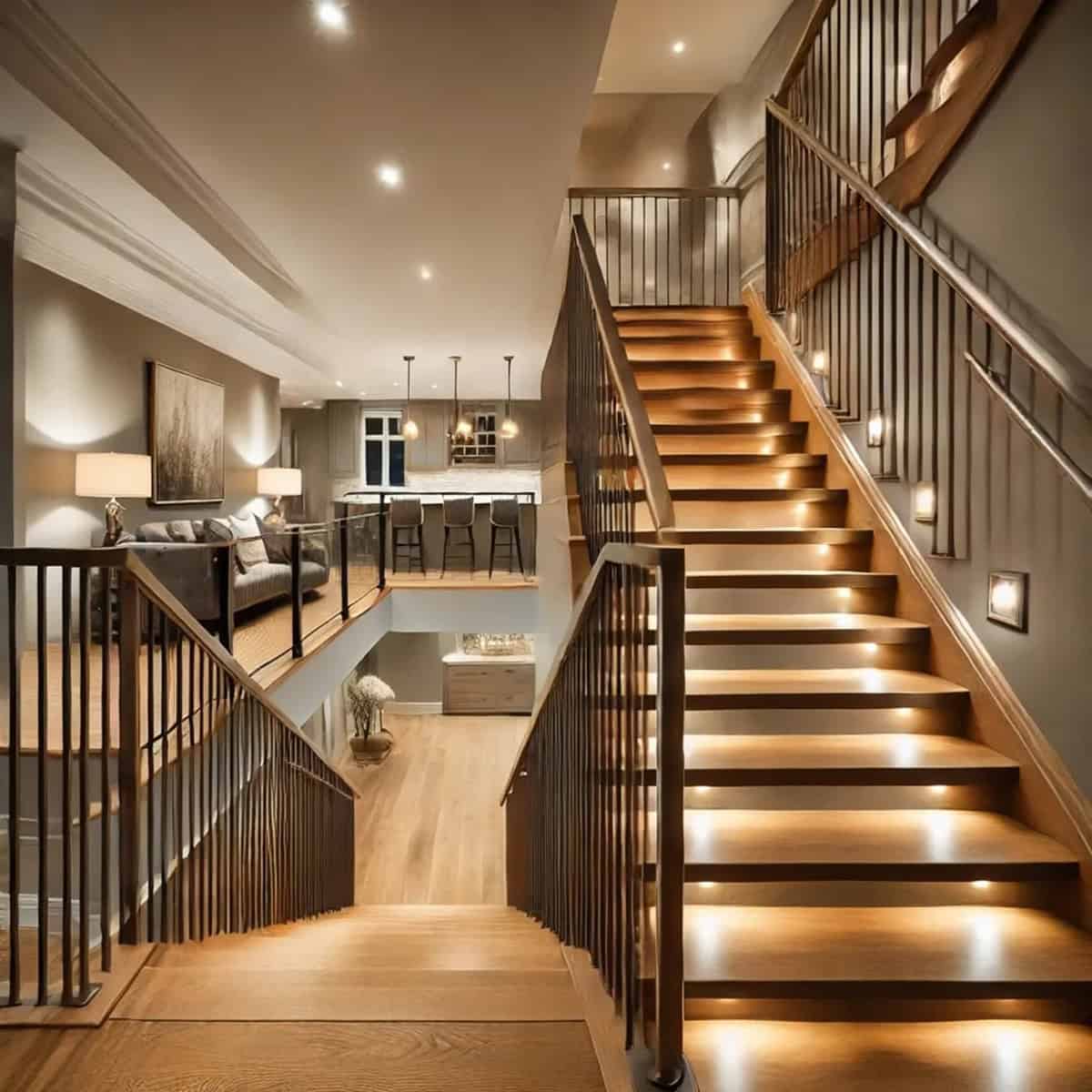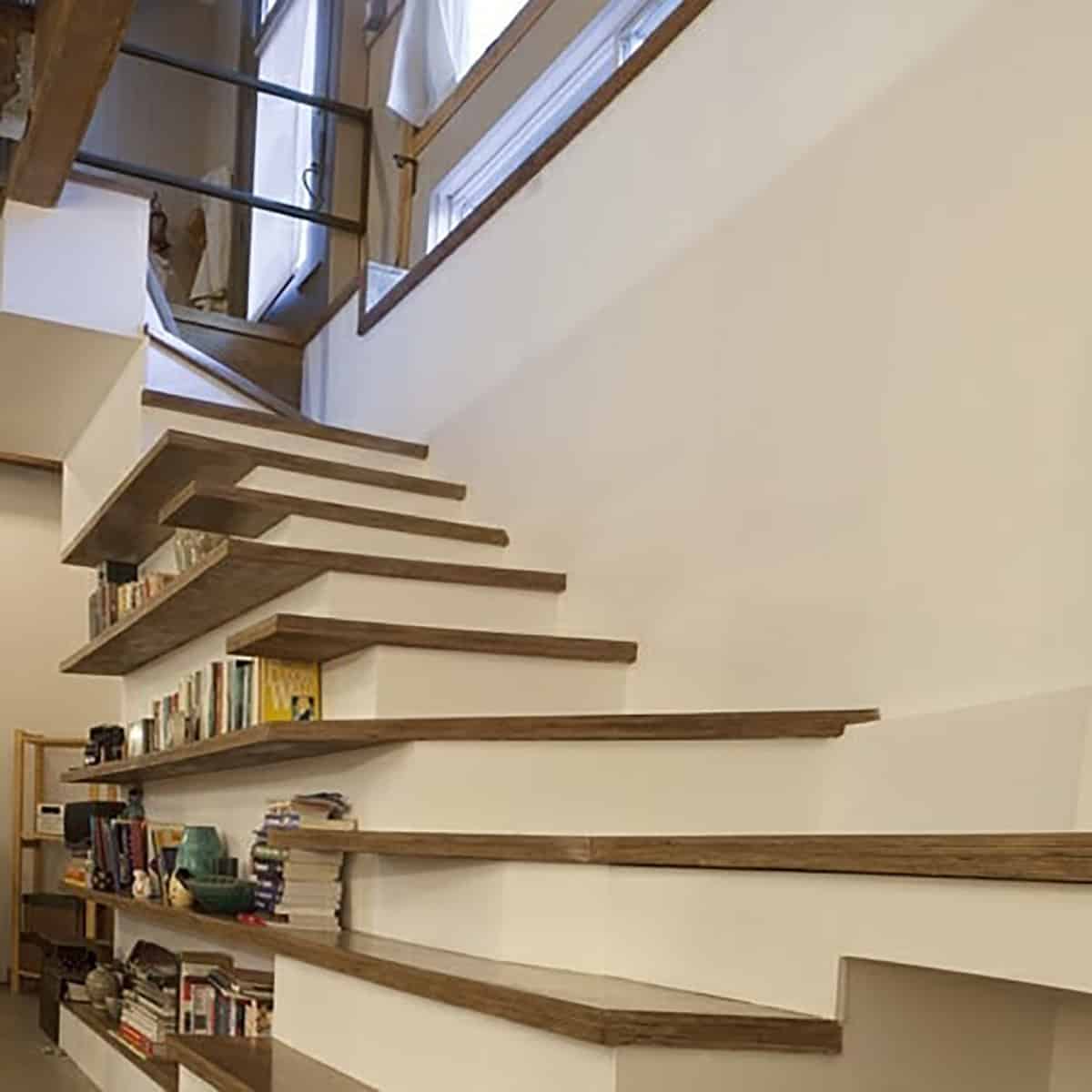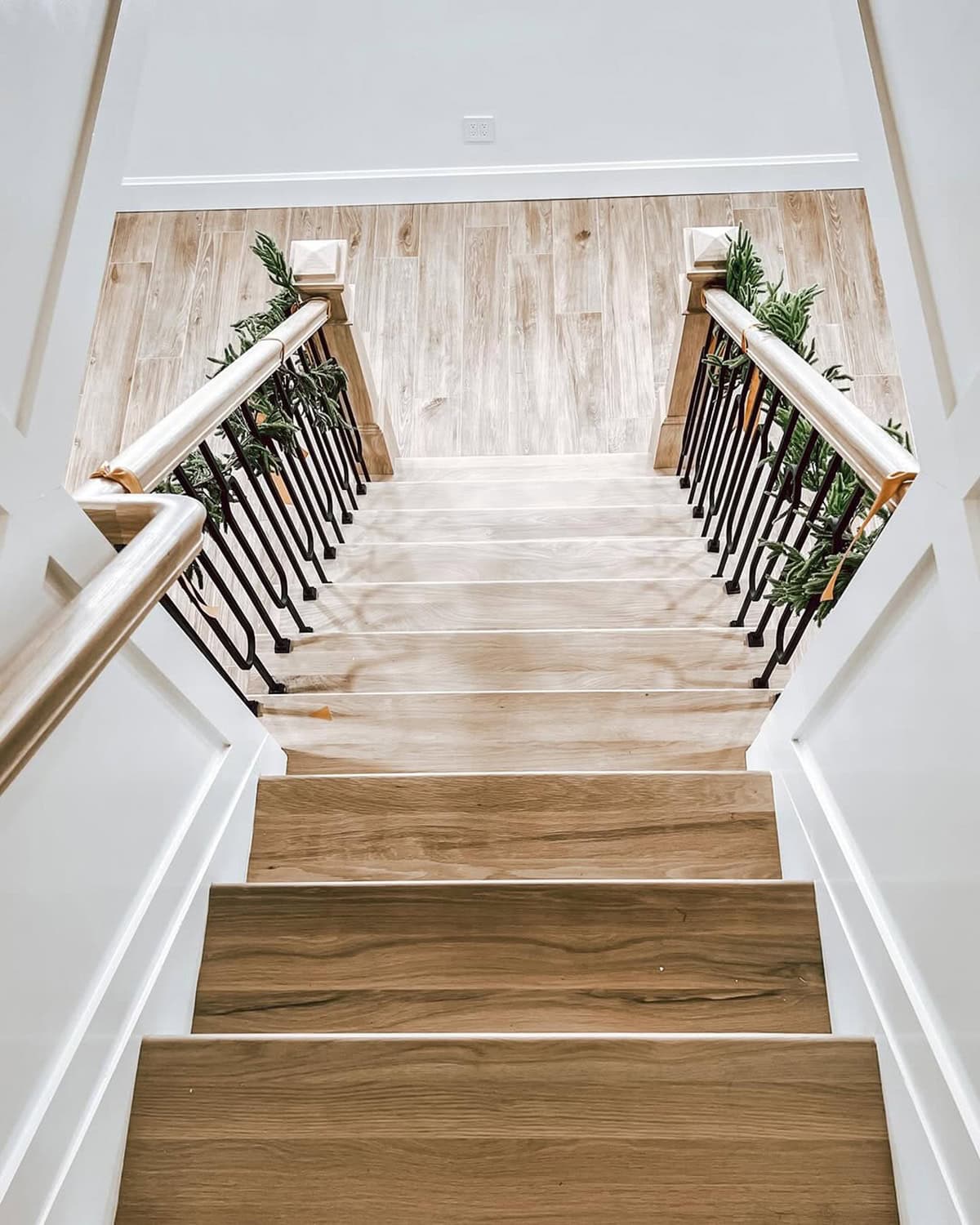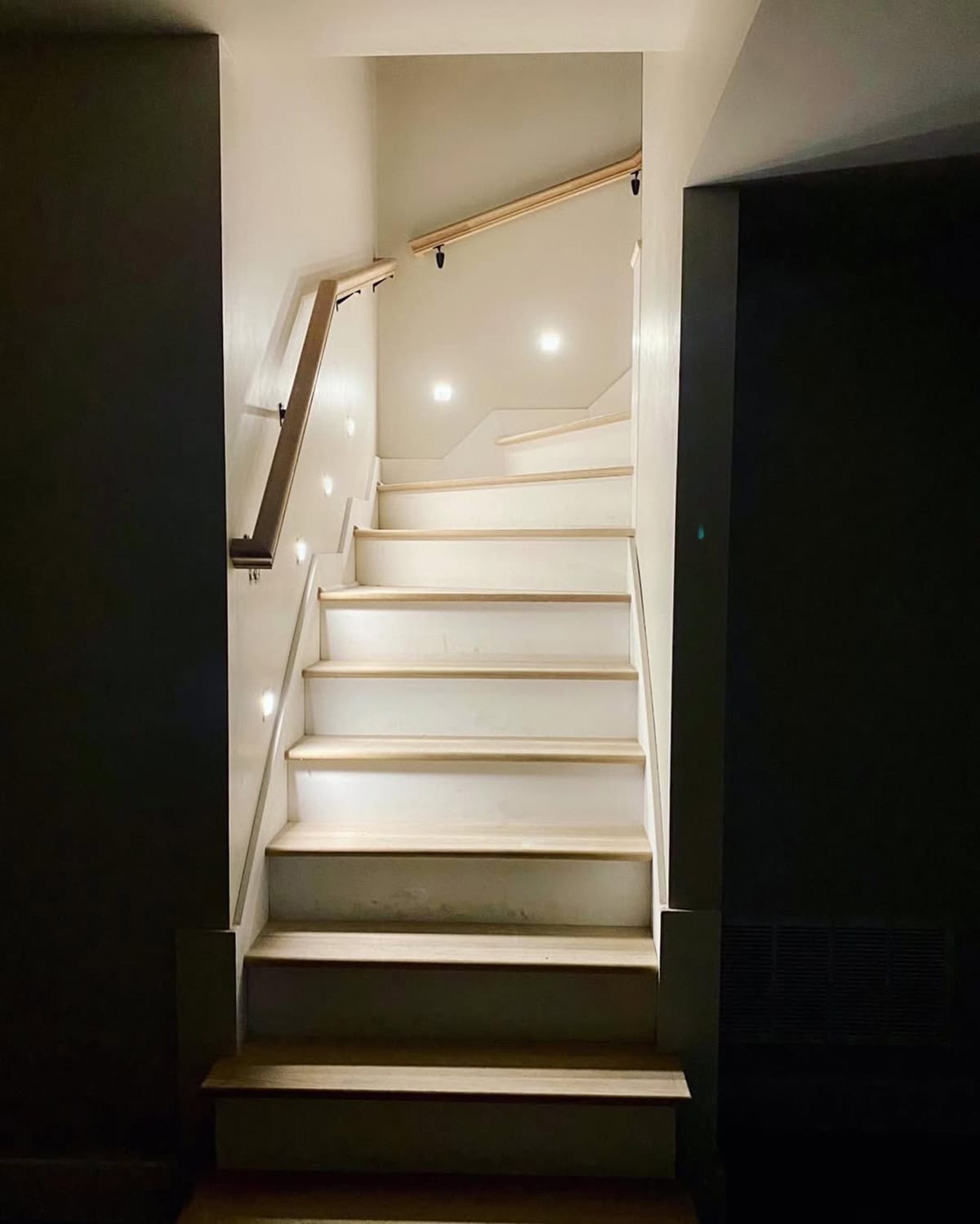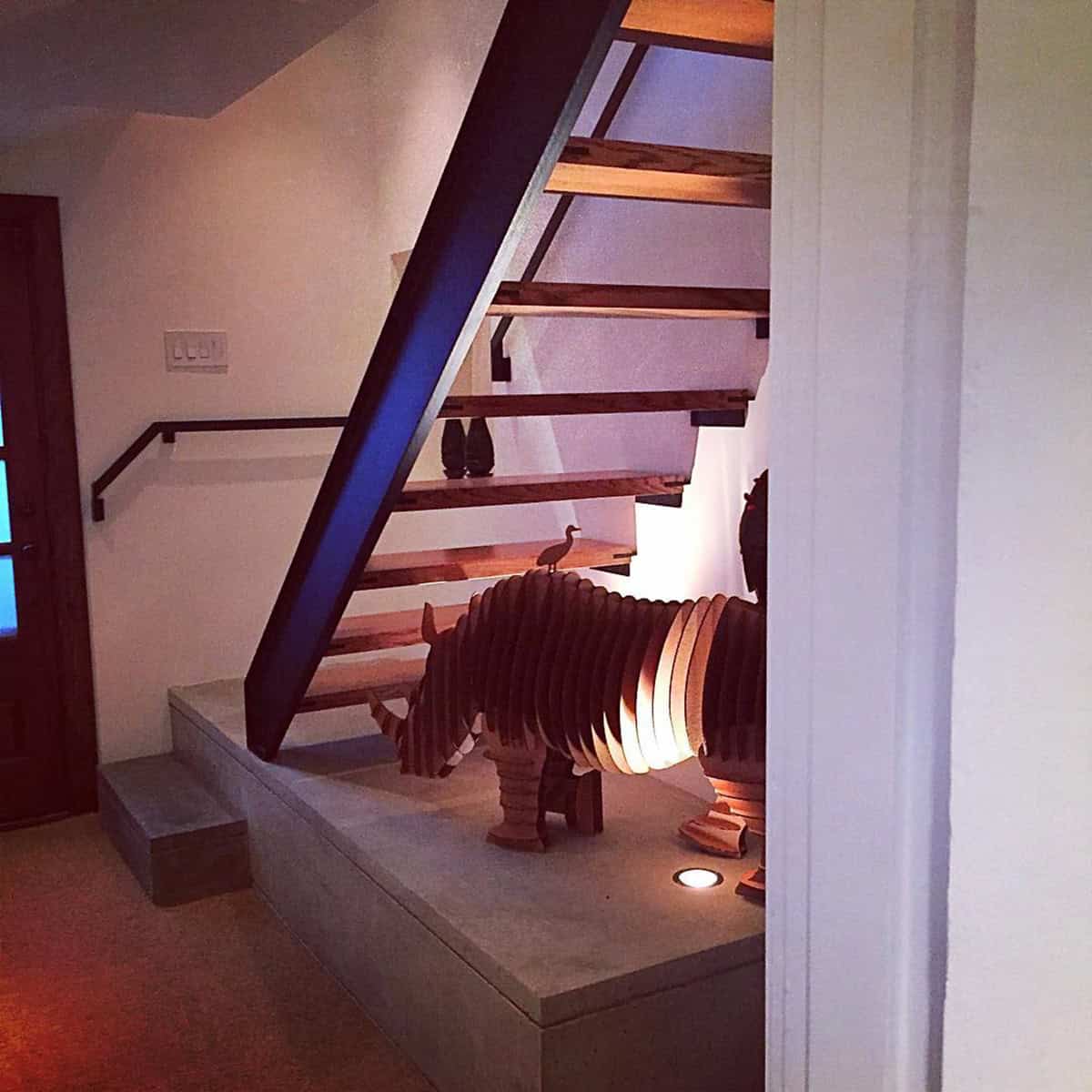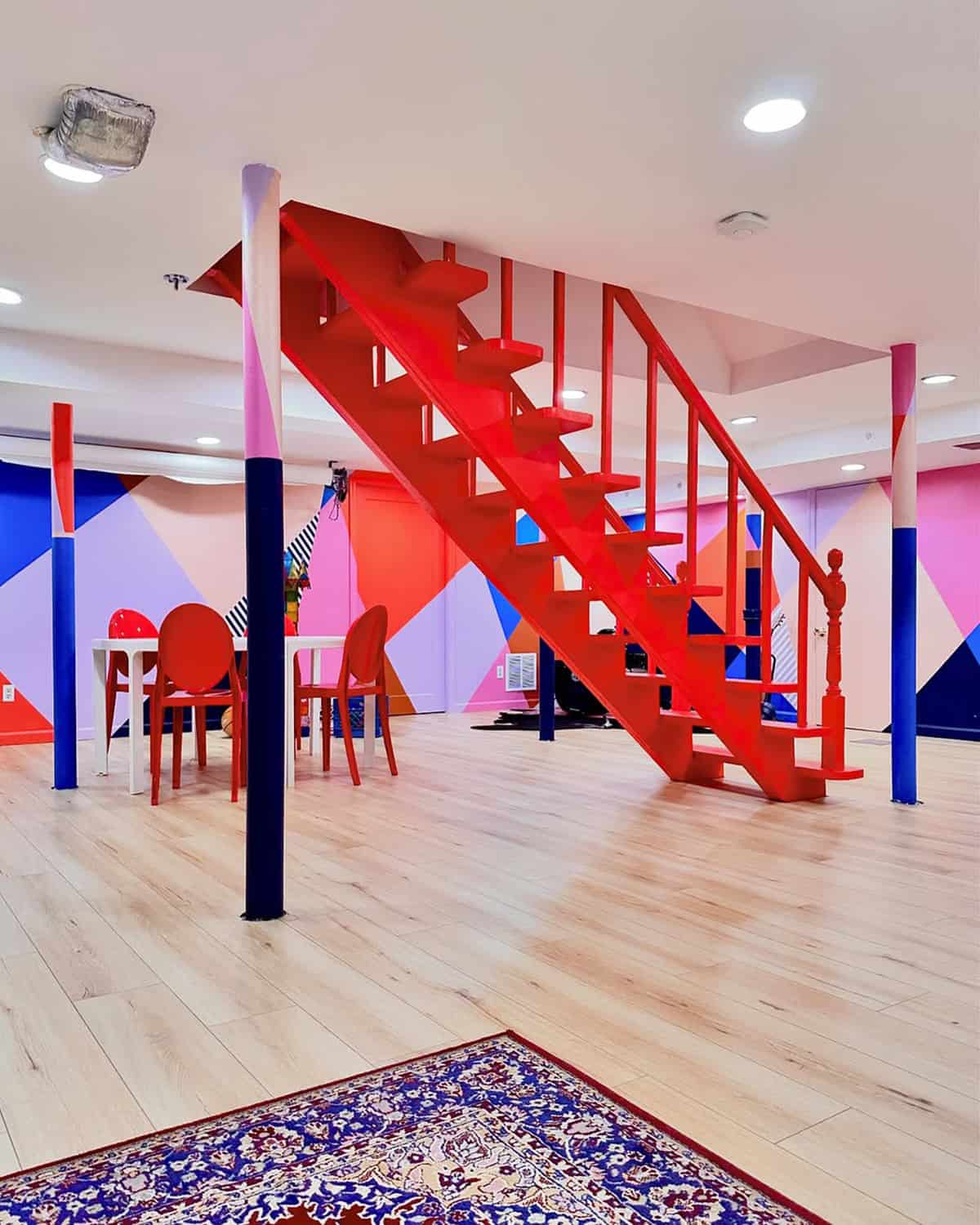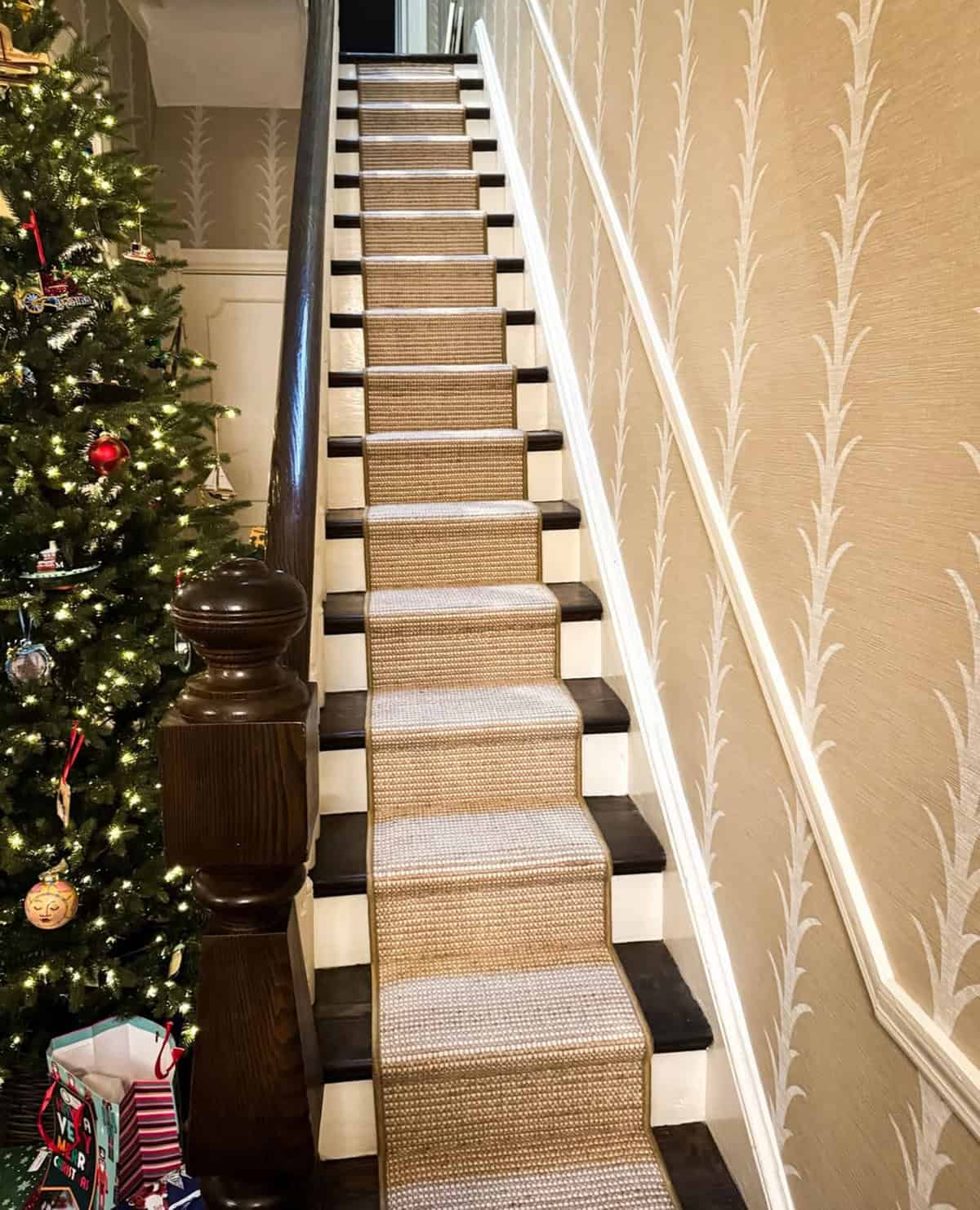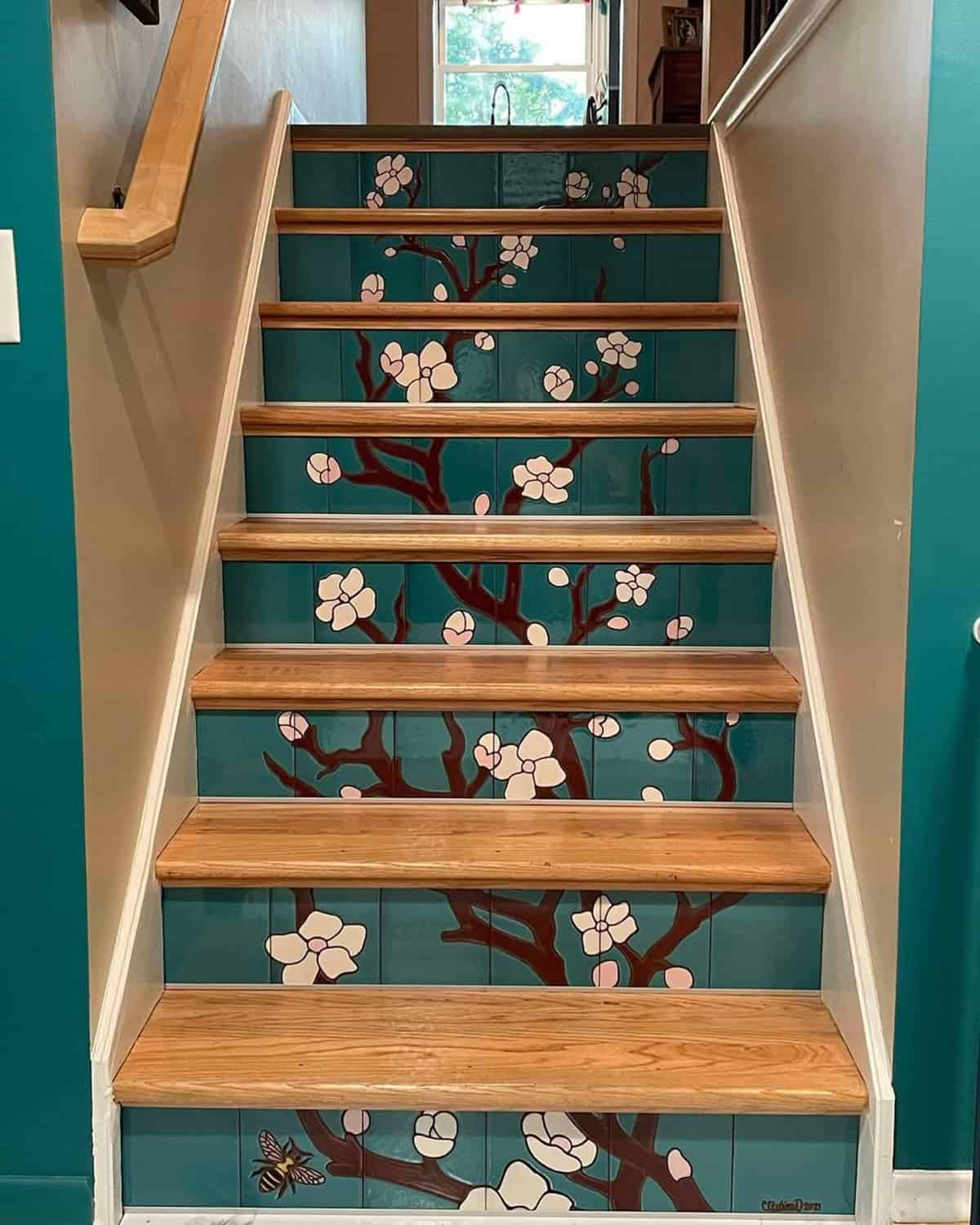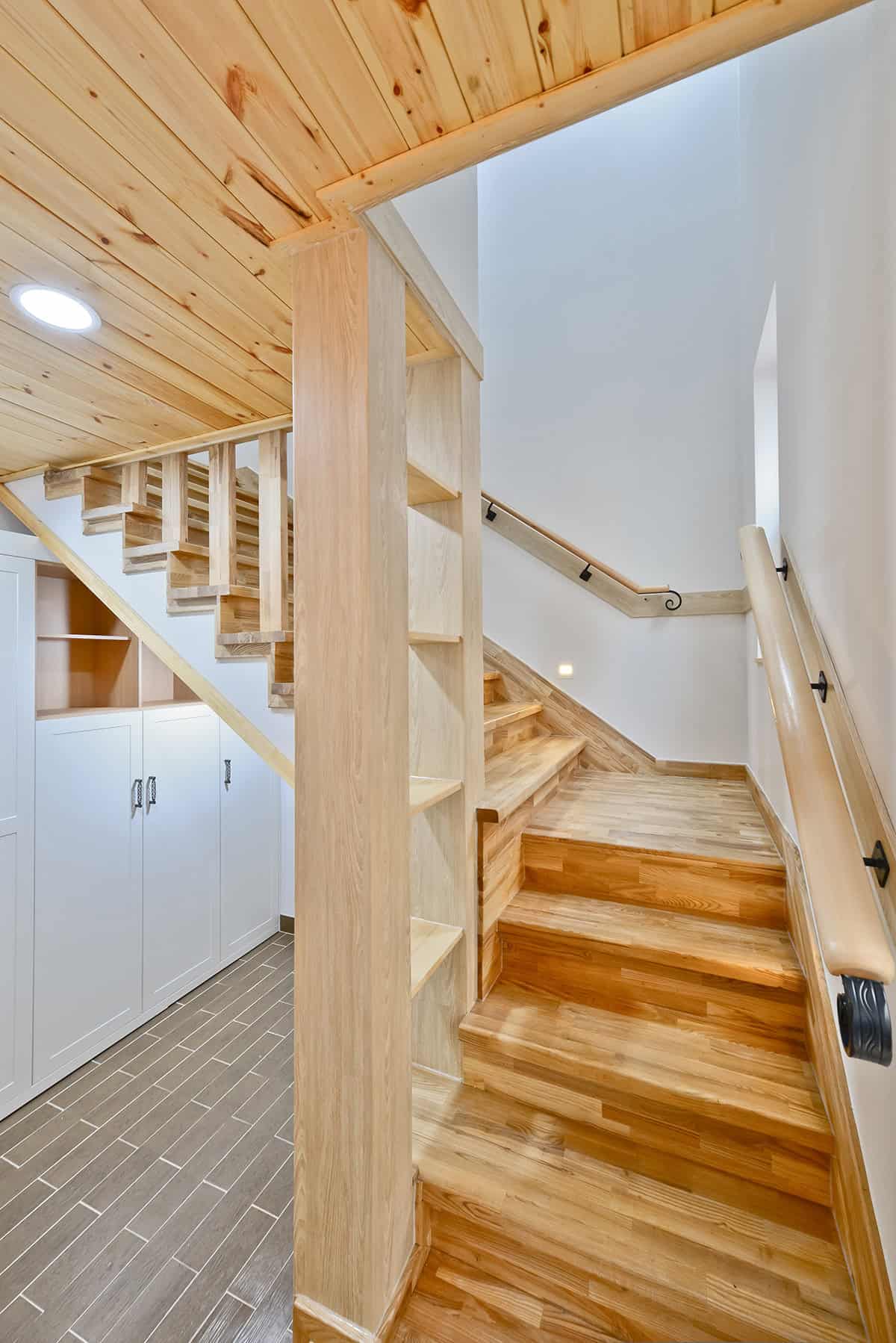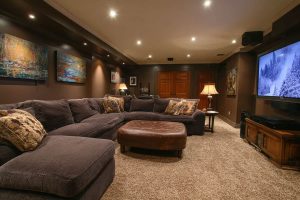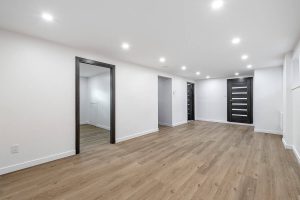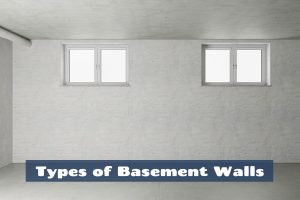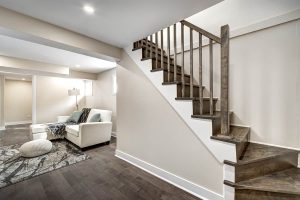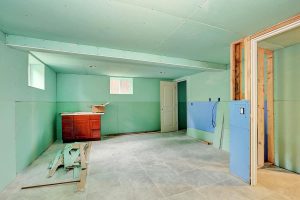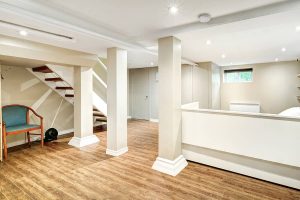Staircases can make a huge impact. Your basement stairs may not get the love they deserve, especially when they lead to a room you’re proud to show off—a guest room, a hobby room, etc. So, if you’re thinking of giving your basement a glow-up, don’t forget to show the stairs some love.
21 Basement Stair Ideas
Not sure how to redesign your basement stairs? Here are 21 clever design ideas for you to go through.
Storage in Every Step
Credit to architdz
Stacking a bunch of crates together to form a makeshift staircase might not be the best idea, but what about empty wooden drawers? This homeowner went with a modular design by stacking drawers and creating a bunch of storage space with every step.
Open risers provide access from the front of the steps. The steep angle of the basement stairs minimize vertical space, leaving more floor space in the basement. A few of the drawers even have integrated lights.
Lit Up All the Way
Credit to joelkuwahara
Trying to find your way down a basement without lights can be a safety hazard. So, instead of fishing in the dark for a pull string, why not integrate lights directly into the handrail of your basement stairs?
A strip of hidden LED lights keeps each step illuminated, lighting up the pathway up and down the staircase. The minimalism of these basement stairs, from the wall-mounted handrail to the light-colored wood, puts more emphasis on the geometric shapes of the overall design.
Spiral Staircase
Credit to politis_metal
While these basement stairs are still a work in progress, the homeowner has already highlighted the most important feature: the spiral-ness of the stairs. Spiral staircases don’t take up as much space and offer enhanced lighting and airflow—things that benefit a basement.
Spiral staircases come in many shapes and forms. These rigid staircases are a space-saving solution, but wider, wooden ones have a more grandeur appearance.
Natural Lighting
Credit to style_by_scarlet
There are several things to consider when designing basement stairs. One of these is lighting, which is a safety concern. This homeowner cleverly solves the problem by harnessing natural light. Simple roof windows can keep otherwise dim basement stairs fully illuminated during the day.
Of course, nighttime is another issue, but you can solve this with LED strips or, as seen in this image, hanging lights and sconces.
Open-Frame Design
Credit to firststepdesigns
This image shows simplicity at its finest. These open-concept basement stairs have a slight landing before continuing 90° from the top steps. Underneath the bottom-most steps are hidden LED strips for additional lighting.
The black-steel frame gives the staircase structure, while each step is given beautiful oak accents for a slightly rustic touch. The dual-material construction gives the stairs a somewhat industrial vibe while also maintaining classiness.
Slide or Stairs
Credit to myhouseidea
This basement stair idea includes a neat slide that allows you to go down the stairs rapidly. This is a perfect add-on for those with kids or pets.
The actual staircase is a modern design featuring open treads and a metal frame. There may not be anything fancy on the stairs, but the slide will have you descending in style!
Flowing Curve
Credit to hdistair
While also just a work in progress, the frame of the stairs is already in place. We can see a slight curve on the top and bottom of the stairs, deviating from traditional straight staircases we’ve seen thus far.
The stairs come with contrasting wooden treads with bright risers. The stringer or side support has a crisp, clean edge, where custom railings will be installed to provide somewhere to hold while ascending and descending.
Walkout Access
Credit to darlington_designs_nj
Walkout accesses are outdoor steps to and from the basement. They provide a means to escape directly to the outdoors during emergencies. Just because walkout accesses serve an important safety-related function doesn’t mean they can’t be stylish!
In this pic, we can see a paved patio directly in front of the door, surrounded by retaining walls on two sides. Black metal railings are lined on one side of the wall, while the short, integrated steps lead directly to ground level.
Rope Handrail Design
Credit lakebomoreno
These stairs are unique in the sense that they don’t include a handrail. Instead, this homeowner went with a unique rope handrail, which is attached to the side wall with brackets. The risers appear steeper than you’d normally see, but this design helps minimize the amount of basement floor space the stairs take up.
The homeowner didn’t use stair runners or carpeted steps. Instead, they relied solely on alternative tread width accents, which give a more personal touch to these steps.
Industrial Feel
Credit to the_stockhouse_project
The mix of dark steel and wood produce an industrial feel, but the stone wall adjacent the bottom flight gives a more earthy contrast. Of course, a bit of artwork on the wall can make the dark room a bit livelier.
These stairs feature open wooden treads that allow light to penetrate the wall and corners. Minimal railing was used with a wooden handrail strip. The mix between black and brown lends a warm yet modern feel to the staircase.
Elegant Entrance to a Hobby Room
Credit to ljsmithstairs
This image shows the traditional bright risers with wooden steps. Thick wooden newel posts stand at the bottom of the steps, which anchor the railing system with cute, curvy spindles. The stairs are alit by natural sunlight from the top landing, but at night, warm lights provide ample brightness.
The design of the stairs may be traditional, but they suit the hobby room in the basement. While slightly contrasting, the wooden treads and newel post suit the basement floor and overall vibes of the room designed for entertainment.
Like Entering a Cave
Credit to monumentalgc
Wooden treads with light risers are a tried-and-true basement staircase design. These steps go a bit further with the addition of dark edges for contrast. As you can see from this pic, the basement appears dark and gloomy, and the stone accent wall only adds to this vibe.
The banister and newel post start from the basement’s ceiling and end on the bottom landing. This provides access from two directions—directly in front of the stairs and from the side.
Stairway to Underground Heaven
Credit to pittsburghpropertyremodelers
Staircases such as the one shown here are typically reserved for homes or buildings with high traffic. These stairs span at least two floors with a wide landing before access to the basement. Under each step are two lights that more than adequately light up the walkway.
One of the more prominent features of these basement stairs is their shallower angle as opposed to the previous staircases. This design requires more floor space to complete, but it’s a lot easier on the knees of those ascending and descending.
2-in-1 Stairs
Credit to millesymas
If you’re not a fan of handrails or banisters, perhaps this basement stair design will tickle your fancy. From the top landing is a turn that descends into the basement, with the treads creating shelves for books and other small items.
The homeowner went for added wow by installing a perforated metal floor as a top landing. This lets people from above see and hear what’s going on in the basement and vice versa.
Tapered Opening
Credit to bitsymoms
There’s plenty to love about these adorable basement stairs. Firstly, the last few steps of the staircase are surrounded in live greenery, adding a bit of freshness to the basement. The treads are made of beautiful light wood that match the hardwood floors of the basement beautifully.
A simple handrail keeps users steady while descending, but the final few steps have cute tune-fork-shaped spindles that support the rest of the banister. The ending is slightly tapered to open toward the basement.
Stairway Nightlights
Credit to thecedarhillfarmhouse
These basement stairs are a combination of minimalist design and modern sleekness. Both the treads and risers are light in color, with the brightness of the treads coming from light-toned laminate. The color choice makes the stairway appear larger than it is.
The owner of this home thoughtfully installed integrated lights in the wall for both safety and ambiance purposes. With such a layout, these stairs don’t require spindles or newel posts to stand out.
Treasure Under the Stairs
Credit to janescalamity
Space limitations may have forced this homeowner to design their basement stairs carefully, but they did a splendid job. While the stairs are at a steepish angle, there was enough room to spare for a bottom landing with a single step that leads directly into the basement.
However, the landing extends all the way from the bottom of the staircase to the underneath it, which leaves enough space for a single rhino statue. One underrated feature is the light integrated into the landing, shining a bright light onto the statue and making it the focal point of the basement.
Solid Red
Credit to shapesforthepeople
We’ve seen several homeowners use multiple materials and colors for their basement stairs, but this one chose a different path. Instead of a multi-tone staircase, they went with fire-engine red—a color that screams for attention. From the appearance of the basement walls, this designer certainly doesn’t mind experimenting with colors.
Though the color is incredibly unique, the staircase’s design is somewhat traditional. It features open treads and a handrail with spindles on each step. The brightness of the room would make integrated tread lights redundant.
Stair Runner
Credit to sisalrugsdirect
Oftentimes, the simplest addition has the biggest impact. On this two-tone staircase, the homeowner placed a woven runner that extends the entire length of the stairs. The runner matches the color of the wallpaper with plant-like designs.
Art on the Risers
Credit to carlyquinndesigns
Due to the lack of features, such as posts or landings, this designer had to decorate their basement staircase somehow. The width of the stairs doesn’t leave room for many additions, but where there’s a flat surface, there’s art to be made.
There’s a lot to be said about the design of these basement steps. Firstly, the color isn’t traditional, but who says you have to stick to the classics? But most prominently, the risers are a work of art, literally. Before being cut down to size, an artist drew a tree on the individual riser panels.
Clever Storage Closet Built Under Basement Stairs
This basement staircase makes the most of the space below by adding a built-in storage closet and slim shelving. Vertical cubbies fit books or small decorations, while the enclosed area offers plenty of room for household essentials. Pale wood and a clean design create a bright and organized entry to the basement.
